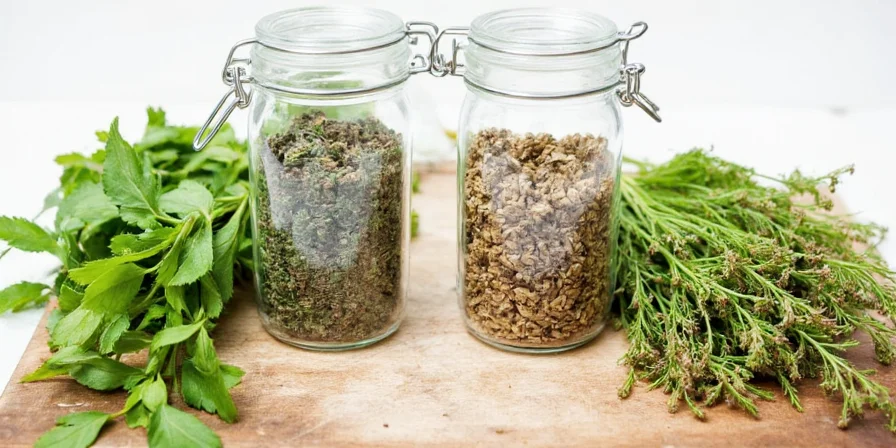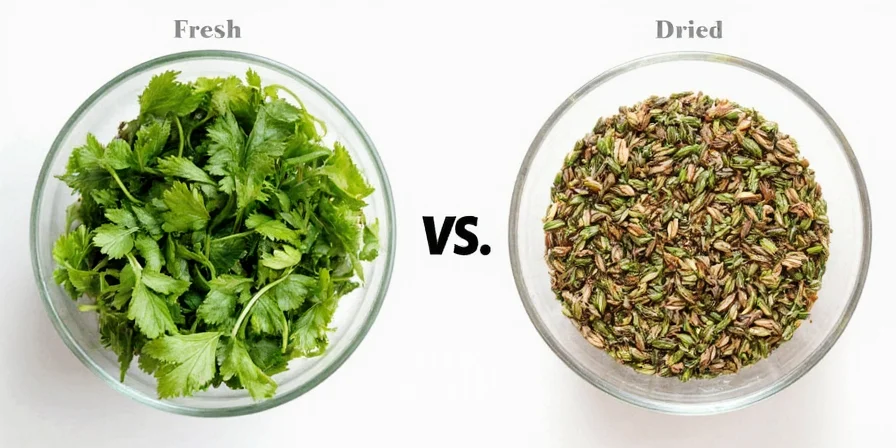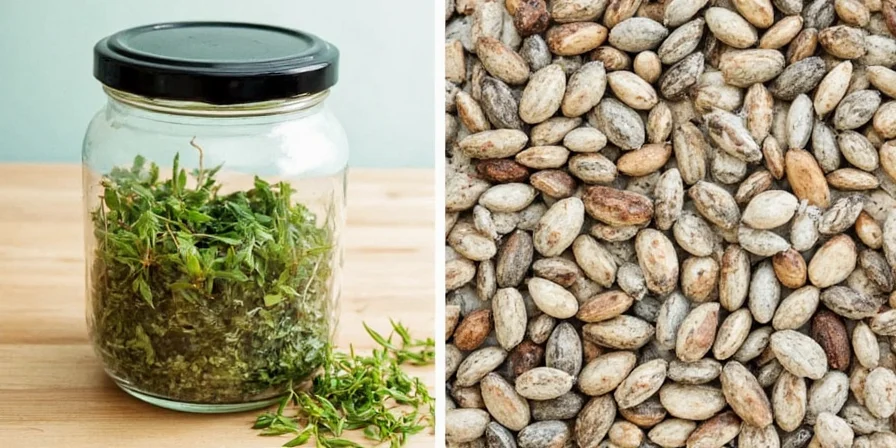Here's the exact fresh-to-dried herb conversion chart home cooks need for perfect seasoning every time. Use these verified ratios to avoid underseasoned or overpowering dishes:
| Herb | Fresh Measurement | Dried Measurement | When to Use Dried |
|---|---|---|---|
| Basil | 1 tablespoon chopped | 1 teaspoon crushed | Tomato sauces, long-cooked dishes |
| Oregano | 1 tablespoon chopped | 1 teaspoon ground | Pizza, pasta sauces, marinades |
| Thyme | 1 tablespoon chopped | 1 teaspoon leaves | Stews, roasts, soups |
| Rosemary | 1 tablespoon chopped | ½ teaspoon ground | Meat dishes, roasted vegetables |
| Mint | 2 tablespoons chopped | 1 teaspoon crumbled | Baked goods, dry rubs |
| Cilantro | ¼ cup chopped | Not recommended | Always use fresh for best flavor |
| Sage | 1 tablespoon chopped | ½ teaspoon crumbled | Stuffing, poultry dishes |

Why These Ratios Actually Work (No More Guesswork)
Dried herbs are more concentrated because water removal leaves behind stronger essential oils. That's why you need less dried herb than fresh. Our 3:1 ratio (fresh to dried) works for most herbs, but there are important exceptions:
- Cilantro must stay fresh - Drying destroys its bright citrus flavor, leaving only a dusty aftertaste
- Dill loses potency fast - Use fresh for cold dishes, dried only for smoked fish or pickling
- Rosemary needs special handling - Dried rosemary benefits from toasting in oil before use
| Most Common Mistake | Correct Approach | Flavor Impact |
|---|---|---|
| Using equal amounts fresh and dried | Always use 3x more fresh than dried | Prevents bitter, overwhelming flavors |
| Adding dried herbs at the end of cooking | Add dried herbs 20+ minutes before serving | Allows full flavor development |
| Storing herbs in clear containers | Use opaque, airtight containers | Maintains potency for 6+ months |

Professional Storage Methods That Actually Work
Extend your herbs' shelf life with these chef-approved techniques:
- For fresh tender herbs (basil, cilantro): Trim ends, place in water-filled jar like flowers, cover loosely with plastic bag. Lasts 2 weeks in fridge.
- For hardy herbs (rosemary, thyme): Wrap in damp paper towel, store in airtight container. Keeps 3 weeks in fridge.
- Dried herbs: Store below 70°F in dark glass jars. Replace every 6 months (older herbs lose 50%+ flavor).


Real Kitchen Applications: When to Choose Fresh vs Dried
Follow these practical guidelines used by professional chefs:
- Dried herbs win for: Long-cooked dishes (stews, soups, tomato sauces), dry rubs, and baked goods
- Fresh herbs win for: Finishing dishes, cold preparations (salsas, salads), and delicate proteins (fish, eggs)
- Always fresh exception: Cilantro, dill, and tarragon - drying destroys their essential flavor compounds
- Chef's pro tip: For dishes cooking 30+ minutes, use 75% dried herbs early + 25% fresh added at the end
Top 5 Herb Mistakes Home Cooks Make (And How to Fix Them)
- Mistake: Adding dried herbs in the last 5 minutes of cooking
Solution: Add dried herbs 20+ minutes before serving to allow flavor development - Mistake: Storing herbs in the spice rack on the wall
Solution: Keep dried herbs in a cool, dark cabinet away from heat sources - Mistake: Using dried cilantro as substitute for fresh
Solution: Substitute fresh parsley or mint if cilantro unavailable - Mistake: Measuring dried herbs with wet spoons
Solution: Use dry measuring spoons for dried herbs to prevent clumping - Mistake: Adding fresh delicate herbs (basil, cilantro) at the start of cooking
Solution: Stir in fresh delicate herbs during the last 2 minutes of cooking












 浙公网安备
33010002000092号
浙公网安备
33010002000092号 浙B2-20120091-4
浙B2-20120091-4